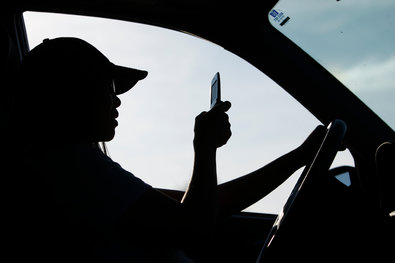
How to Stop People From Texting While Driving
Most states have banned texting while driving, but distracted driving only seems to be getting worse. In New York, legislators introduced a bill that would allow police officers arriving at the scene of a crash to test drivers’ phones for evidence of recent activity with a device called the “Textalyzer” — the digital equivalent of the Breathalyzer. Is this the best way to deal with public health consequences of texting and driving? What else can be done to stop this pervasive practice?
* ban = 금(지)하다/ text = (휴대전화로) 문자를 보내다/ distracted = (정신이) 산만[산란]해진/ legislator = 국회의원, 입법자/ arrive at the scene of ~ = ~의 현장에 도착하다/ equivalent of[to] ~ = ~에 상당[대응]하는 것/ breathalyzer = 음주 측정기/ consequence of ~ = ~이 결과/ pervasive = 만연하는
 음주 측정을 하는 것처럼, 운전 중 문자 사용하는 만연한 문제를 다루는 가장 좋은 방법은 없나요?
음주 측정을 하는 것처럼, 운전 중 문자 사용하는 만연한 문제를 다루는 가장 좋은 방법은 없나요?
1. Safer Alternatives Are Just Around the Corner
Any type of communication behind the wheel carries some risk and distracts the driver, but this technical problem may benefit from a technical solution.
2. Incentivize the Opposite Action
To change people’s behavior, we must change the trigger — in this case, the text or call notification — that causes the behavior in the first place.
3. Build Better Voice Technology
Giving the police the discretion to choose whose phones to examine may disproportionately penalize some groups of people.
4. Laws and Attitudes Need to Change
Legislation helps, but the increase in seatbelt use since the 1970s is proof that drivers can be taught that distracted driving is dangerous.
Sample Essay
Laws and Attitudes About Texting While Driving Need to Change
Five seconds. That’s how long your eyes are off the road when you text. That’s how long it takes to drive across a football field at 55 miles per hour. And that’s how long it took for Jane and Dan Phillips from my home state of Minnesota to lose their daughter, Kelly.
Kelly’s friend took her eyes off the road to send a text message or change a song. The car went off the road at a curve and rolled. Kelly and her friend died.
It’s a common story in our tech-savvy world. Much too common. And that’s why, together with my colleagues on both sides of the aisle in the United States Senate, I’ve worked to advance legislation that will help slow the surge of distracted driving.
My bipartisan initiatives, which have been included in the last two transportation bills, encourage states to enact graduated licensing programs, helping new drivers acclimate to the rules of the road and increase funding for states to enact and enforce distracted driving laws. It’s laws like these that make it possible for states to continue educating the public and for law enforcement to step up their efforts. In April, for instance, Minnesota police officers issued nearly 1,000 citations for texting while driving during a weeklong concerted enforcement effort.
There’s more work to do. And, of course, this can’t be just about changing laws, we need to change attitudes, too. But I’m confident that we can do it because we’ve done it before. In 1970, fewer than 15 percent of Americans used seatbelts. Today, 84 percent do.
We need to keep working together until Americans keep their eyes off their phone and on the road. No text message is worth dying for.





![]() 음주 측정을 하는 것처럼, 운전 중 문자 사용하는 만연한 문제를 다루는 가장 좋은 방법은 없나요?
음주 측정을 하는 것처럼, 운전 중 문자 사용하는 만연한 문제를 다루는 가장 좋은 방법은 없나요?






